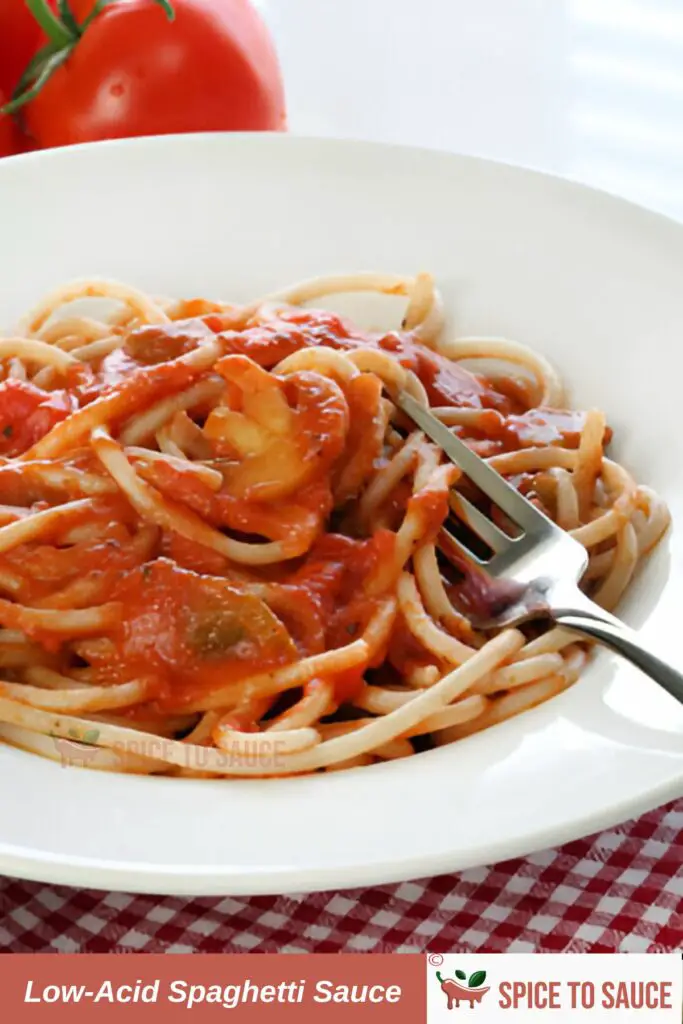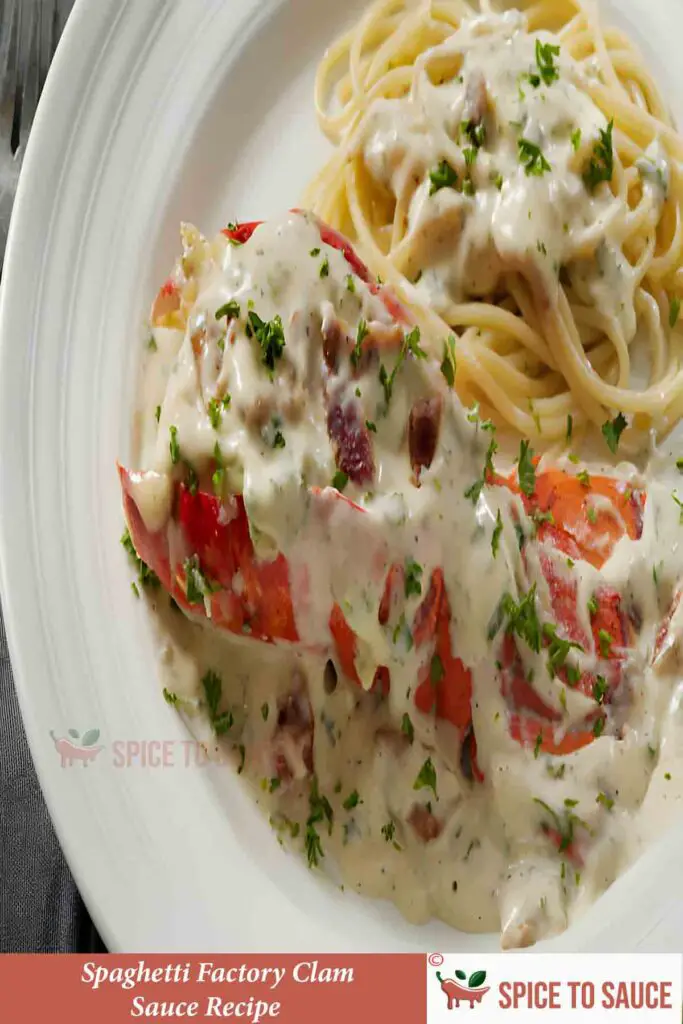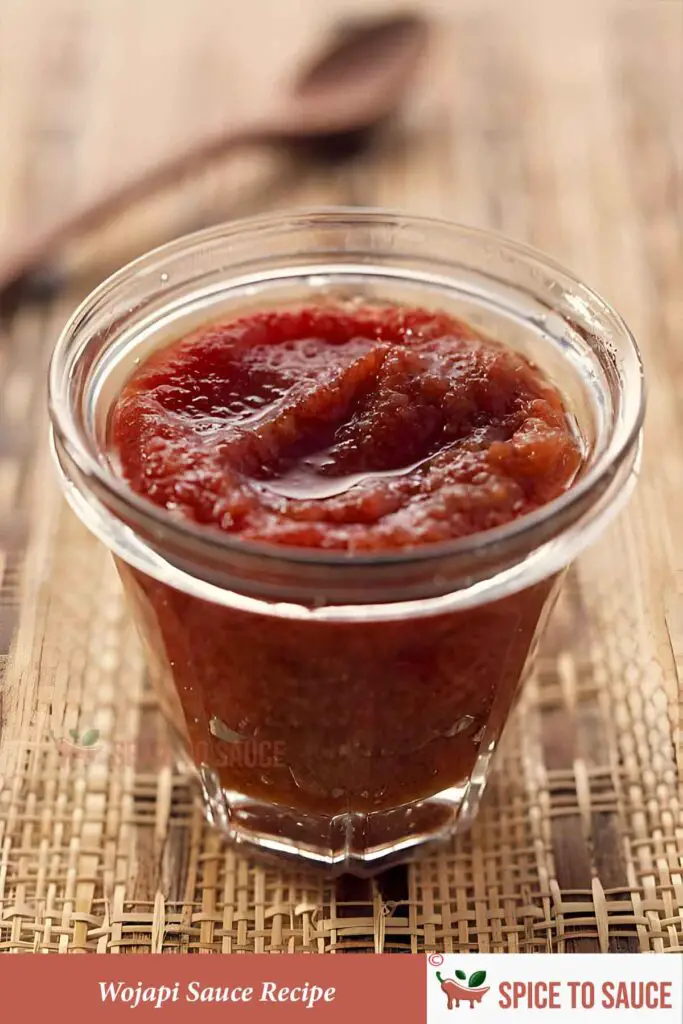Let’s be honest, your spaghetti night shouldn’t come with regret. But many people find tomato sauce hostile. It’s very frustrating and unfair that when you sit down to enjoy a bowl of pasta, you may end up dealing with heartburn, acid reflux, or an annoying burn in your throat within the hour.
But here’s the good news: you don’t have to give up your spaghetti; you need the right sauce. Let me introduce you to a flavorful sauce that is easy on your stomach and won’t ruin your evening. So, let’s talk about low-acid spaghetti sauce.

Why Regular Tomato Sauce Can Be a Problem?
Tomatoes are naturally acidic. That’s what gives them that tangy and bright flavor. But when you have a sensitive stomach and deal with acid reflux or GERD, that acidity becomes a real problem.
Regrettably, most traditional sauces primarily consist of tomatoes, along with acidic enhancers such as wine, vinegar, or lime juice. While traditional sauces are delicious, they can be harsh on sensitive stomachs.
For those trying to avoid post-pasta pain, the answer isn’t to ditch tomato sauce entirely; it’s to adjust how we make it.
What is the Secret to a Delicious low-acid Sauce? It’s All in the Balance
You don’t need a chemistry degree to make a tummy-friendly pasta sauce. It just takes a few smart swaps and a little patience. Here’s what makes all the difference:
1. Start with Low-Acid Tomatoes.
As I said before, tomatoes are naturally acidic. Its typical pH range is 4.2-4.9. The lower the pH, the more acidic it is. In that case, San Marzano is an excellent choice, as they are mostly yellow and orange tomatoes. If you’re using canned, look for ones labeled ‘low acid’ or ‘no added citric acid.’ Try to avoid anything with fire-roasted or zesty on the label.
2. Add Sweet Vegetables.
Carrots are your best friend here. Grating a carrot into your sauce does two things: it adds natural sweetness and helps mellow out the acidity. Use the carrot whole and discard it after cooking the sauce if you don’t want it.
3. No Wine, No Vinegar.
Don’t use wine or vinegar at all. It’s just asking for trouble if you’re sensitive to acid.
Both vinegar and wine are more acidic than tomatoes.
4. A Pinch of Baking Soda
This is an old-school trick that works. Just ¼ teaspoon of baking soda can help neutralize the acidity in the sauce. Add it at the end of the cooking, and you’ll see it fizz as it works its magic.
How to Make Low-Acid Spaghetti Sauce (Homemade)?
This is my go-to sauce when I want pasta but don’t want to deal with acidity. It’s easy to make, all the ingredients are at home, and it’s cozy, tasty, and mild.
Ingredients You Need
Olive Oil
We start with olive oil, which is always a good base. It’s smooth and heart-healthy. Two tablespoons of olive oil are all you need to soften the vegetables and give the sauce that silky richness that clings to pasta in all the right ways.
Yellow Onion
A yellow onion is best because it has a mild sweetness when cooked down, and it helps to balance the sharpness of the tomatoes. Use one small onion; I always chop mine pretty small, so they melt into the sauce.
Carrot
It naturally sweetens things up and cuts the acidity without adding sugar. Take one medium carrot; grate it so it melts into the sauce.
Garlic
I usually take two garlic cloves just to make the sauce fragrant; if garlic is a no-go for you, feel free to leave it out.
Low-acid Tomatoes
Two cups of low-acid tomatoes, like San Marzano, are enough for your sauce. But, if you’re taking a canned one, see the labels that say “no added citric acid.”
Dried Basil and Oregano
These are the classic duo. Use one teaspoon of these.
Salt and Pepper
Seasoning is everything. Use these as per taste. For beginners, I’m suggesting using a pinch of them.
Baking Soda
This one’s a trick from Grandma’s kitchen. Just ¼ teaspoon will neutralize the acid. You’ll see it fizz for a second, then mellow right out.
Parsley
Finally, sprinkle some parsley on it and use it as you want.
Low-Acid Spaghetti Sauce in 5 Steps
Step 1
Heat the saucepan on medium heat, add olive oil, onion, and carrot, and cook them for 5 minutes. Then add garlic.
Tips: Do not fry the garlic for more than 30 seconds.
Step 2
Add tomatoes and seasonings. Then sprinkle the dried basil, oregano, salt, and black pepper. Then give it a favorable stir.
Step 3
Simmer it over low heat for 25–30 minutes.
Step 4
Now taste it and add ¼ teaspoon of baking soda. After it fizzes for a few seconds, let it neutralize and adjust the seasoning if needed.
Step 5
Turn off the oven, sprinkle fresh parsley, or drizzle olive oil.
Tips: You can blend it for a smoother sauce.
What to Serve It With
- White pasta or brown rice pasta.
- Spaghetti squash or zucchini noodles.
- Grilled chicken or turkey meatballs.
- Simple green salad.

Low Acid Spaghetti Sauce
Ingredients
- 2 Tbsp Olive Oil
- 1 Small Yellow Onion
- 1 Medium Carrot
- 2 Garlic Cloves
- 2 Cups Low-Acid Tomatoes
- 1 Tsp Dried Basil and Oregano
- Salt And Pepper As Per Taste
- 1/4 Tsp Baking Soda
- Parsley As You Need
Instructions
- Heat the olive oil in a saucepan.
- Sauté the carrot, garlic, and onion.
- Add tomatoes, basil, oregano, salt, and pepper, and stir them well.
- Simmer for 25–30 minutes, stirring occasionally.
- Add baking soda.
- Let it cool.
- Pour it into an airtight jar and store it for 3- 5 days.
Nutrition
Conclusion
Not every tomato sauce has to leave you regretting dinner. This one keeps all the warmth and comfort of a traditional spaghetti sauce without the sharp acidity that stirs up trouble later.
It’s simple, clean, and kind to your stomach; made for anyone who’s ever missed out on pasta night because of heartburn. Make it once, and you’ll see that it’s not about sacrificing flavor; it’s about rethinking what makes a delicious sauce. And this one just might become your go-to.
FAQs
What Makes a Spaghetti Sauce Low in Acid?
Low-acid tomatoes and skipping ingredients like vinegar or lemon can make your spaghetti sauce low in acid.
How Do You Reduce Acidity in Tomato Sauce Naturally?
You can add a pinch of baking soda to reduce the acidity in tomato sauce. Alternately, use sweeter vegetables like onions or carrots, which counterbalance the harshness without altering the flavor.
Is Low-acid Spaghetti Sauce Good for Gerd or Heartburn?
Yes, it can help, because low acid means your stomach is healthy, and it’s gentle on your stomach, so it is definitely beneficial for GERD or heartburn.
Can You Make Low-acid Sauce Without Sacrificing Flavor?
Of course. Rich flavor can be achieved without using a lot of acid by roasting the tomatoes, adding herbs like oregano or basil, and using a little good olive oil.




